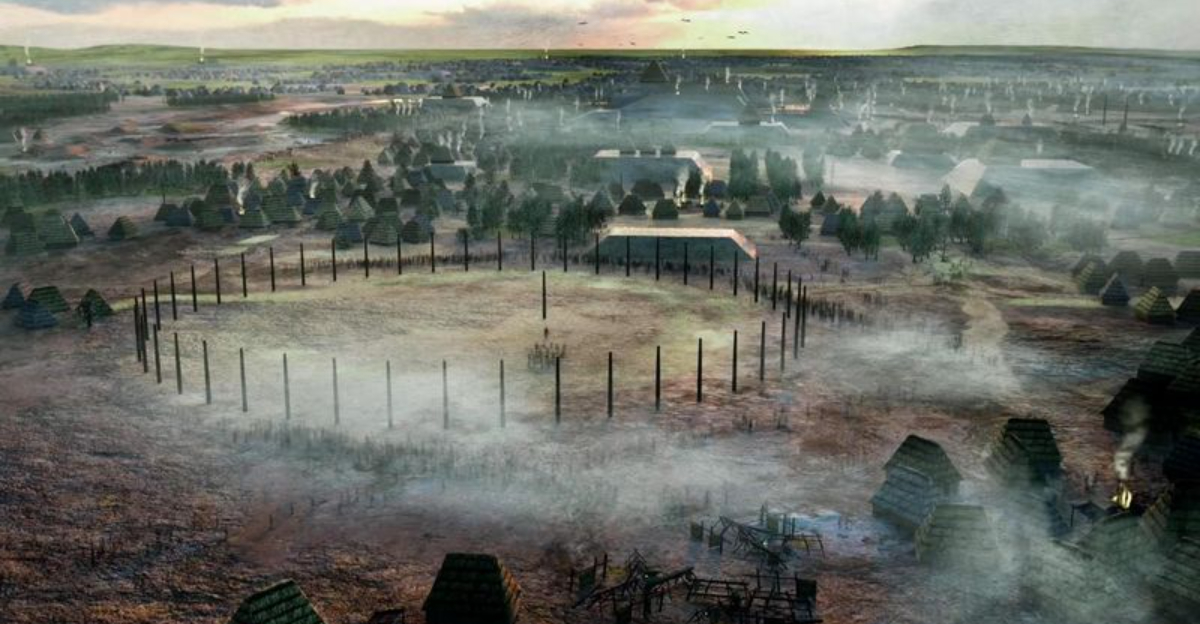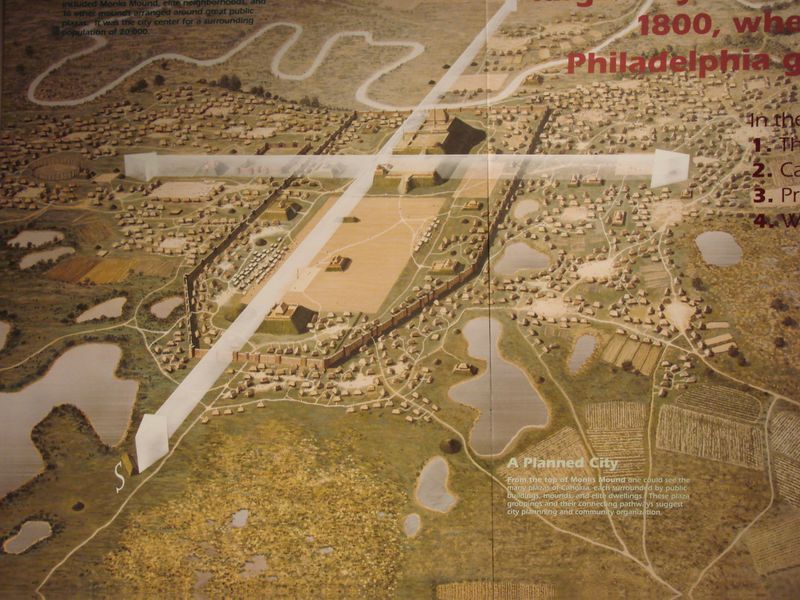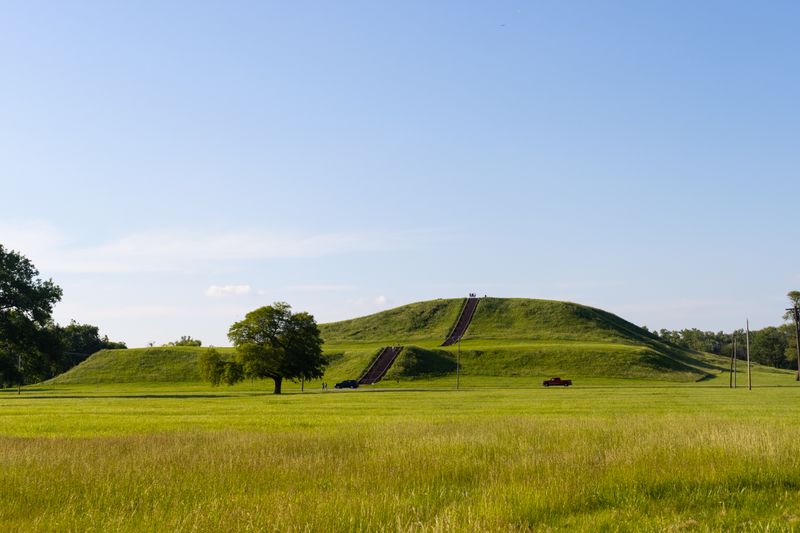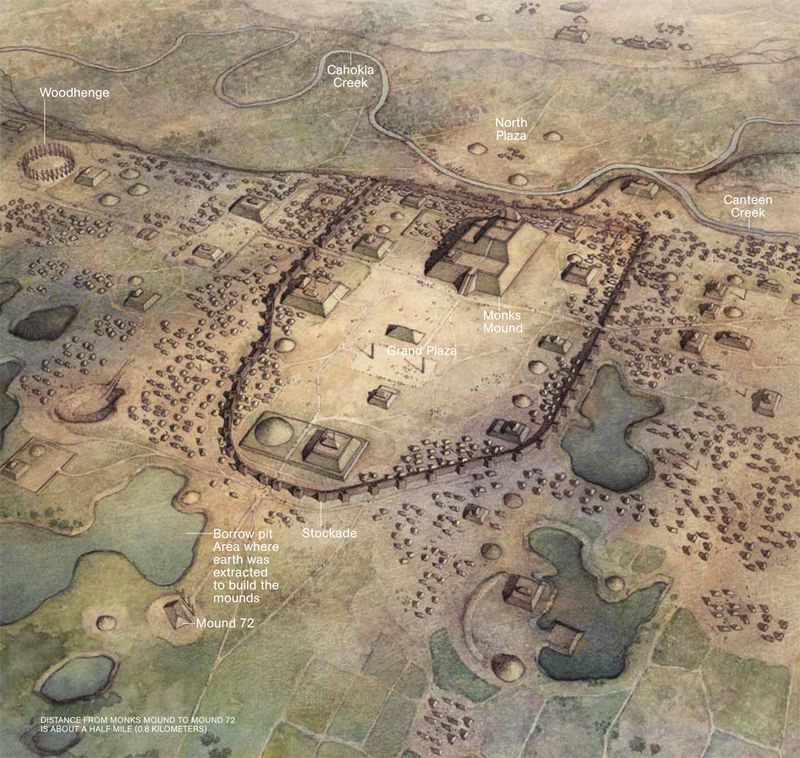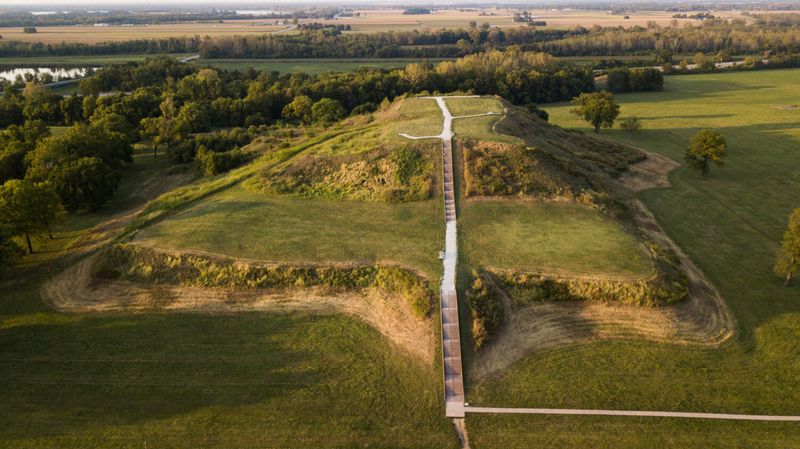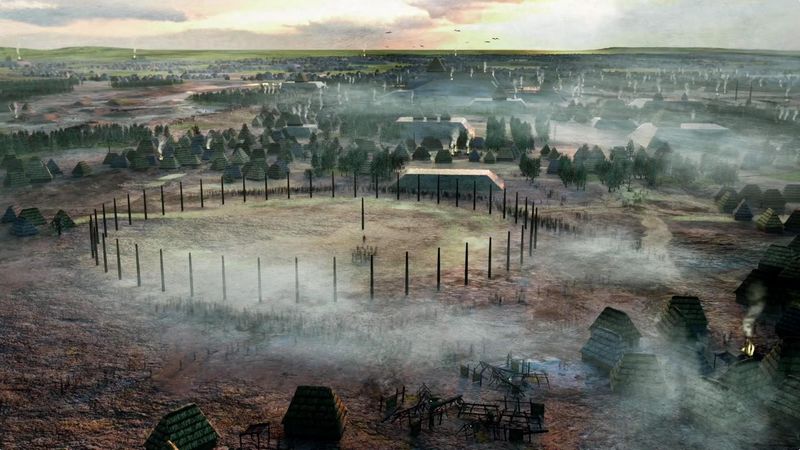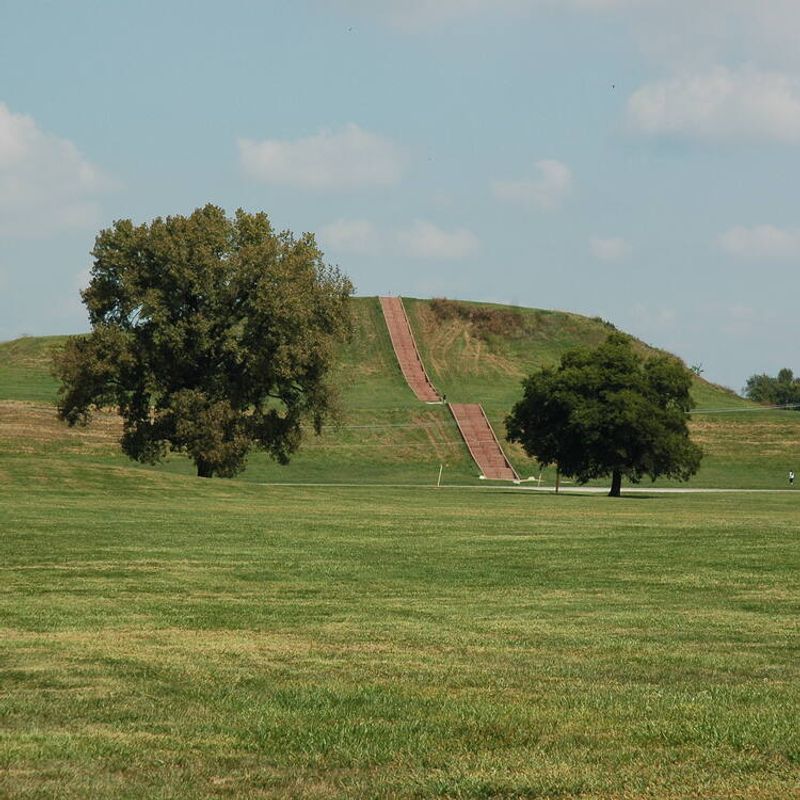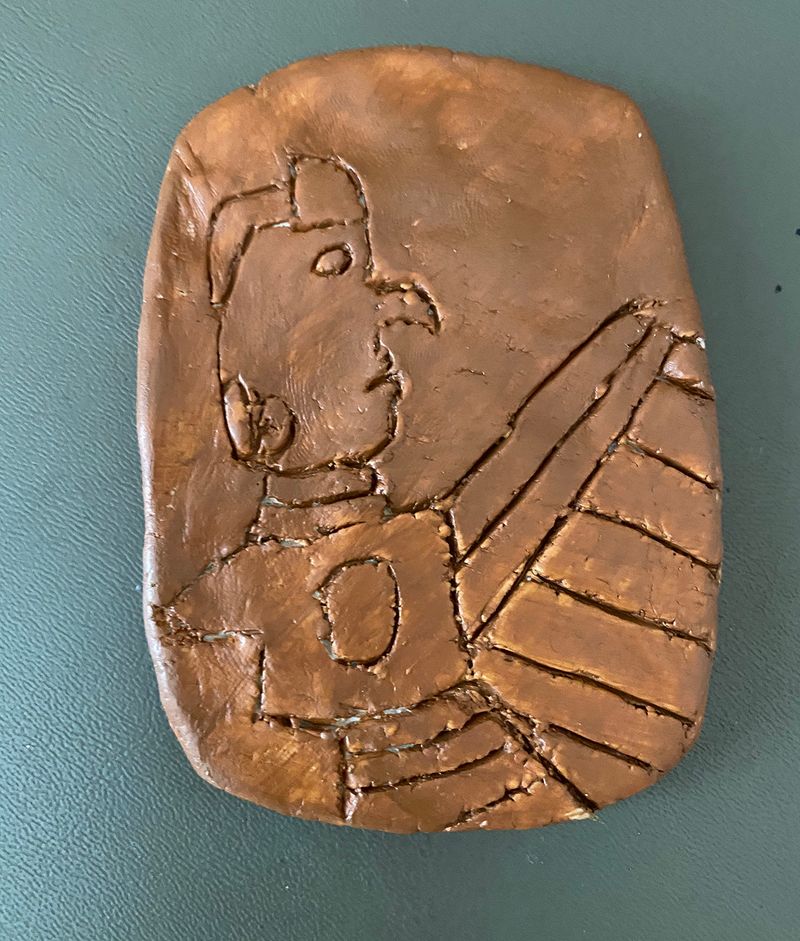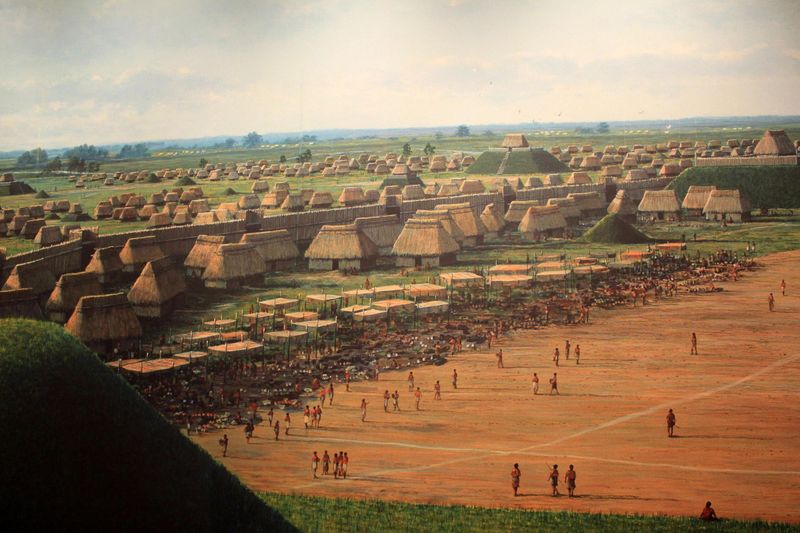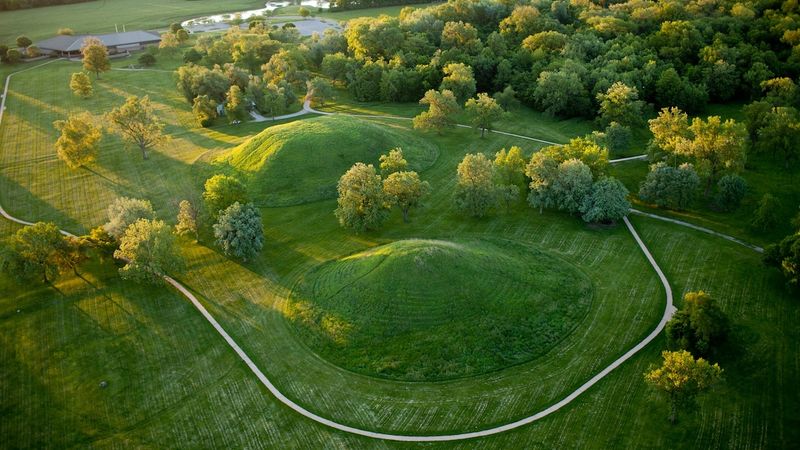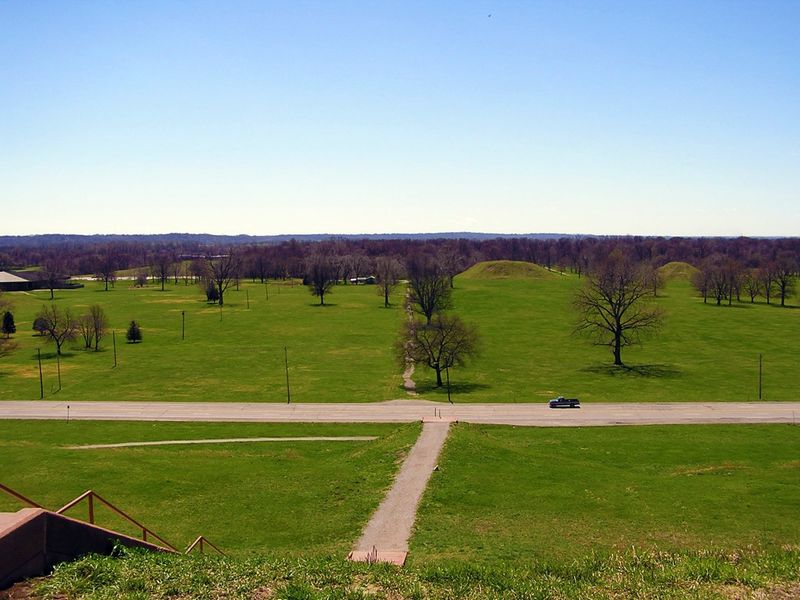Long before the United States was born, a complex society thrived on the banks of the Mississippi River. Known as Cahokia, this ancient city was bustling with life, culture, and innovation.
With a population that dwarfed London at the time, Cahokia was a marvel of urban planning and agricultural advancement. Explore these ten fascinating facts about the monumental civilization that once built America’s pyramids.
1. Bigger Than London (at the Time)
Picture a city so vast, it rivals the great London of 1100 A.D. Welcome to Cahokia, the largest and most sophisticated pre-Columbian city north of Mexico. With a population soaring up to 20,000 souls, Cahokia was a hub of innovation and culture.
As you wandered its streets, the hum of a populous city filled the air. Tall structures reached for the sky, while vibrant markets buzzed with the chatter of traders exchanging goods.
This thriving metropolis stood as a testament to human achievement, long before the modern age.
2. Home to Over 100 Pyramidal Mounds
Amidst the lush greenery of the Mississippi River valley, over 100 pyramidal mounds once rose majestically at Cahokia. These earthen structures, with their flat tops, served as platforms for temples and residences.
At the heart of this architectural wonder stands Monks Mound, covering over 14 acres and rising 100 feet tall. Imagine the effort and ingenuity required to create such monumental structures by hand.
Cahokia’s mounds are a testament to the community’s spiritual beliefs and social organization, echoing the grandeur of ancient civilizations worldwide.
3. It Was a Planned City
Cahokia was no random cluster of dwellings; it was a masterpiece of urban planning. Picture a city with grand plazas and well-organized neighborhoods, all laid out with precision.
Roads and ceremonial areas aligned perfectly with celestial bodies, reflecting a deep understanding of astronomy. This celestial alignment wasn’t just for show; it held spiritual significance, guiding the community’s daily life.
As evening fell, the sky mirrored the city’s intricate design, uniting the earthly and the divine, in a harmonious dance of structure and space.
4. Advanced Agricultural Society
In Cahokia, agriculture wasn’t just a way of life; it was an art form. Skillful farmers cultivated fields of corn, squash, and beans, creating a sustainable food supply that supported the bustling urban population.
Picture the landscape – vast fields stretching under the sun, with farmers tending to their crops diligently. This agricultural prowess enabled the Cahokians to engage in elaborate cultural practices, free from the constant worry of food scarcity.
Their farming techniques were as advanced as their city planning, ensuring a prosperous and thriving society.
5. They Built a Woodhenge
Step into the world of ancient astronomy with Cahokia’s Woodhenge. This grand solar calendar, constructed from massive wooden posts, was aligned with equinoxes and solstices.
Imagine the awe-inspiring sight of the sun rising over these posts, marking the passage of time with precision. The Cahokians’ knowledge of astronomy was profound, allowing them to organize agricultural and ceremonial activities according to the stars.
A place of both scientific and spiritual significance, Woodhenge stood as a testament to the community’s connection with the cosmos.
6. Monks Mound Is the Largest Pre-Columbian Earthwork in the Americas
Behold Monks Mound, the largest pre-Columbian earthwork in the Americas. This monumental structure, crafted entirely by hand, stands as a testament to the labor and dedication of Cahokia’s people.
Picture workers, toiling for decades, moving earth with woven baskets to create this colossal mound. Rising 100 feet high, it dominated the landscape, serving as a central gathering place for both spiritual and social activities.
Monks Mound’s sheer size and complexity reflect the ingenuity and determination that defined this ancient civilization.
7. No Written Language, but a Deep Symbolic Culture
Though the Cahokians left no written records, their culture speaks volumes through symbols and art. Imagine intricate pottery and artifacts, each telling a story of social hierarchy, cosmology, and everyday life.
Burial practices, adorned with symbolic objects, offered insights into their beliefs and traditions. This rich tapestry of symbolism connected the people, guiding societal roles and cultural values.
In a world without written words, the Cahokians communicated through a visual and spiritual language, leaving a legacy that continues to intrigue and inspire.
8. Cahokia Was a Major Trade Hub
Cahokia wasn’t just a city; it was a vibrant trade hub, connecting cultures across North America. Imagine the bustling markets, filled with traders exchanging goods from the Great Lakes, Gulf Coast, and Rocky Mountains.
Artifacts found at the site reveal a network of trade that extended far beyond its borders. This cultural exchange brought new ideas, materials, and innovations, enriching Cahokia’s society.
The city’s strategic location on the Mississippi River made it a focal point for commerce, creating a melting pot of diversity and growth.
9. Sudden Decline Remains a Mystery
Cahokia’s sudden decline around 1300 A.D. remains an enigma. Picture once-bustling streets now quiet, as nature slowly reclaims the land. Theories abound: climate change, deforestation, flooding, or political unrest.
Yet, no single cause explains the city’s abandonment by 1400 A.D. What led to the fall of this thriving civilization? The mystery continues to captivate archaeologists and historians, as they piece together clues from the past.
This unresolved chapter adds an air of intrigue to Cahokia’s story, inviting us to explore its secrets further.
10. It Was Almost Erased from History
For centuries, the grandeur of Cahokia was overlooked, its significance dismissed by history. Imagine the ruins, quietly enduring the passage of time, as modern development encroached.
Only recently has Cahokia gained recognition as one of America’s greatest ancient cities. Archaeological efforts have unearthed its hidden glory, shedding light on its importance and contribution to our shared heritage.
This rediscovery has sparked a renewed interest in preserving and understanding the legacy of Cahokia, a civilization nearly lost to the annals of time.
